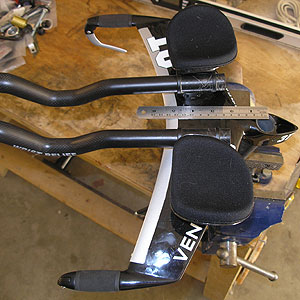3T’s Ventus bar: The road test
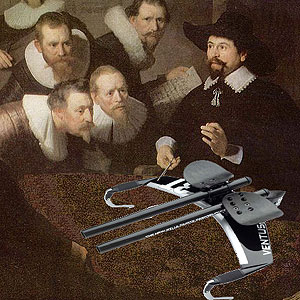
When I was a young bike racer, and after pulling on my wool jersey, hiking myself over the top tube and onto my Brooks saddle, and cinching down my Christophe toe straps, I'd see one of two logos staring up at me from my stem and handlebars: Cinelli or TTT. This, during the superleggera generation, when Frenchmen won grand tours with their legs and Italians with their engineering.
Thirty years ago, to the year, I entered and Cino Cinelli exited the world of bicycle racing. Cinelli sold his interests to Antonio Colombo of Colombus tubing, parts of a conglomerate eventually reformed under Gruppo SpA. Gruppo absorbed the 3T company in the 1990s, long after both these Italian heavyweight handlebar brands were producing bantamweight sales figures.
"Three T" or "Triple T," continued to decline and eventually ceased to operate in any meaningful way. But out of the ashes of antiquated Italian designs arose The New 3T.
The president and CEO of the New 3T is René Wiertz. Originally tapped to handle worldwide distribution for 3T (the distribution arrangements have now altered) was Rudie Campagne, CEO of Vittoria who, incidentally, employed one of 3T's current engineers (an Italian who happens to be a triathlete). Wiertz and Campagne are therefore each Dutchmen who own their own revered Italian cycling brands.
There is precedent for this. The Dutch replaced the Italians in the late 16th Century. Rembrandt and Vermeer took up where Caravaggio and Raphael left off. History therefore predicts that the Dutch will learn, and eventually inherit the mantle of master, from the Italians. As it was with oil and canvas, the Dutch are now becoming masters of the bicycle.
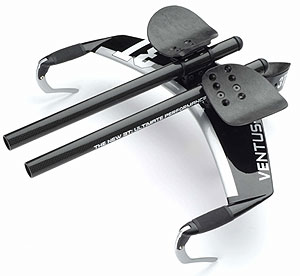
Enough about Dutchmen. Let's talk about 3T's Ventus aero bar. I first saw this atop Fabian Cancellara's bike when I visited him, his team, and his bike, at Cervelo's training camp in Agoura Hills. I thought I might like to try one of these out.
I got the Ventus bar in the mail. Upon cursory glance I realized this could go one of two ways. I could stick it on any bike, ride it, make up a bunch of flowery stuff, write it down, and that would be the end of that.
The only other way was to find out what frame matched: (1) the bar; and (2) my fit coordinates. This, because the bar is not length or pitch adjustable. The stem, the brake levers — half the damned bike — is built into this bar. Just attach wheels and a derailleur and it's ready to ride.
I chose the bike journalist's version of the road less traveled (that is to say, I decided to do this correctly instead of half-assed) through a process described elsewhere (links at the bottom of this article). Having now ridden and pounded and thrashed this bar to within an inch of its life (in other words, I treated it as you, the reader, would), I'm prepared to tell you all about it.
I received two of these bars. The first was an early version, with just the bar. No spacers, no adjustability. Hence my concern that I might not find the bike to match the bar. I did eventually receive a second version that came as it would come to an end-user. This one had spacers galore. Not that I needed any, because I got myself the precise bike in the proper size needed for the bar I had in hand.
Still, the spacers would be handy for the next guy to come along and want a Ventus. There was both a 10mm and 20mm spacer for each armrest (you can gang them up to make 30mm), and spacers in those same dimensions for placement between the bar and the headset top cap. The stem itself — built-in as it was — came in a length that, as close as I could determine, was about 90mm. This length is in the eye of the beholder. It depends on how far behind the centerline of the pursuit bar you think the armrests should go, and what you consider the centerline of this pursuit bar.
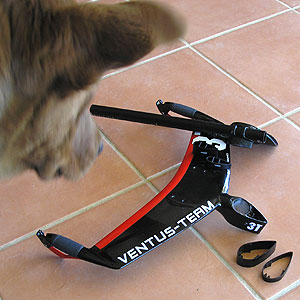
How did I determine all of this? I measured how far the back of the armrests of a Visiontech clip-on sits in front of the bike's steering axis (the fork steer column) when mounted on a 100mm stem. The Ventus' armrests sat 10mm closer to the steerer. Hence, a 90mm stem. But, if you used this same protocol with a Profile Design clip-on, or a Hed, or a Bontrager, Oval Concepts, you'll end up with a different determination.
What do I like about the 3T Ventus? Plenty, but probably not the stuff 3T expects me to like. Yes, I'm sure it's very aerodynamic: 3T says :50 over a 40k versus any other bar. But I never believe any of those sorts of claims. Why do I think it's more aero? Because it looks the part, and because aeroness just happens whenever Vroomen is identified sniffing around a project. Plus, there's that very minimalist pursuit position, and I've always thought that whatever sticks out on either side of the shoulders and thighs is just, well, like swimming with your feet pointing toward the bottom of the pool instead of plantar-flexed. You can do everything else right, but you just have this "thing" you're hauling through the medium through which you're passing. It's like dead weight or, in this case, dead surface area.
Yes, all that aeroness is nice. But what I really like about the Ventus is its armrests. Man, those are comfortable armrests. Maybe the best armrests going. I know one guy who tried to kype my Ventus armrests to put on the bars of the company that sponsors him, but it's not easy to lay one's hands on another set of these armrests to reconstitute a complete Ventus bar. So I said, "No, I'm sorry, you'll just have to remain uncomfortable."
The bars, when mounted on a bike with a 73° head angle, will remain pretty much flat, that is, horizontal. This you want, if you're going to get this bar, because the aerodynamics of it require that. Fortunately, this is how I ride. The ergonomics of the Ventus were perfect for me.
The brake cables are internally routed, the routing is easy, you just stick the cables in one end and they come out the other. You stick a 5mm ferrule on some housing and start that housing where the cables exit the bars, near the "stem."
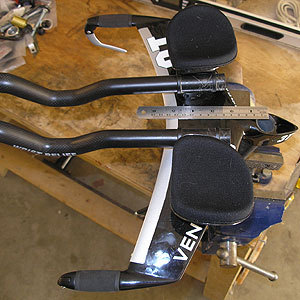
After all is routed, however, you do have to face this issue: The unchangeable brake levers that are an integrated part of this bar have no return springs. Therefore, if you get a bad routing, you're sort of screwed. You have to start all over and try to figure out why the lever is not returning simply off the strength of the brake caliper's return spring. One of my Ventus' levers would not return easily but, oddly enough, it was the front. The rear worked fine. So, I had to grease here and file there and finally they both worked well enough. Still, in a future iteration it would be nice if 3T found a way to stick a return spring in those levers.
One other comfort issue: I hate straight extensions. And I'm not alone in this. The Ventus bar is doomed to a limited customer base if this is the way it's going to be sold. But, that's no worry to me, because I laugh — "Ha!" I say — at the idea of an "aerobar in a box." Might as well send me a box of Hamburger Helper. No thanks. I like to roll my own. In fact, I think this is the way every retail store ought to buy aero bars: in pieces. One company's brackets and armrests, another company's extensions.
Happily, everybody except Zipp, Syntace, Vision and some Easton is making bars with removable extensions that are 22.2mm in O.D. So, I pulled out these straight extensions and stuck in some Blackwell Wrist Reliefs and, presto, a perfectly comfortable aero bar!
The Ventus comes in two versions now, the Pro and the Team. The latter has some aluminum here and there, and weighs 900 grams, 80 grams more than the all-carbon Pro. Each Ventus version has a stated stem pitch of -6 degrees, that is, it is 6 degrees down from perpendicular to the steerer, making it about 12 degrees up from horizontal. The Team has another, lower profile, -17 degree pitch available. The Ventus in all the pics included here, and the one I'm riding, has the -6 degree pitch.
I highly recommend the Ventus, with qualifiers attached. I'm planning — God willing and the creek don't rise — to race a half-dozen or more times this year, and I'm going to do at least some of these races with this bar. It's the bomb. But… one thing to consider. This pursuit position is, as I wrote earlier, minimal. One likes the idea of safety and surety when one is descending, braking, cornering, at 50mph. This is not my idea of the safest and surest pursuit position on which to descend when you're zooming along at the legal highway speed limit. Unsure descenders will want to avoid the Ventus. I've descended at high speed with it, and I'm still here to write about it: so far so good. Just a word to the prudent shopper.
Sometimes it's hard to divine what a company's strategy is. When Cannondale, Scott, Trek, Orbea, Look, Cervelo, Time, Wilier, Specialized, Felt, make a TT bike, is it for the tri market or is that company simply making a bike for its pro trade team and if triathletes buy it, so much the better? Likewise, what are 3T's plans? Is the Ventus simply a bar for the CSC Team? Or, are aero bars a serious category for this company? I hope the latter, because it's got a great base on which to build a successful product line.
But that base is not what it probably considers its sizzle. Yes, the Ventus is sexy, especially the shape of its pursuit bar, and its minimalist levers. But the meat of this bar is in its armrest and easily changeable extensions. Build on that, Mr. Wiertz, make this the basis of your aero bar system, and you've got a fine platform on which to mount a serious incursion into the aero bar market.
Where to buy this bar? As noted, Vittoria Industries, SpA was the worldwide distributor throughout 2007. That is apparently not the case, or not entirely the case. U.S. customers should contact Velimpex Marketing for a list of resellers and distributors.
LATE ADD: In response to Dave Linenberg's questions in his comment below:
1. I have a PDF of the Ventus bar in front of me, and it says -6 and -17 are the available configs. That tallies with the sample bar I have in front of me.
2. You can choose no spacers, that is to say, you can omit the use of any and all the 10mm and 20mm spacers included.
3. If you do omit all spacers, the top of the armrest, measured at the dip of its curved trough, sits 5cm above the centerline of the pursuit bar. This places it squarely in between the 3.5cm distance of a Visiontech and 6.5cm of the Profile Design.
4. The pads are beefy. they are 1.5cm thick, and represent 1.5cm of the 5cm total armrest elevation.



